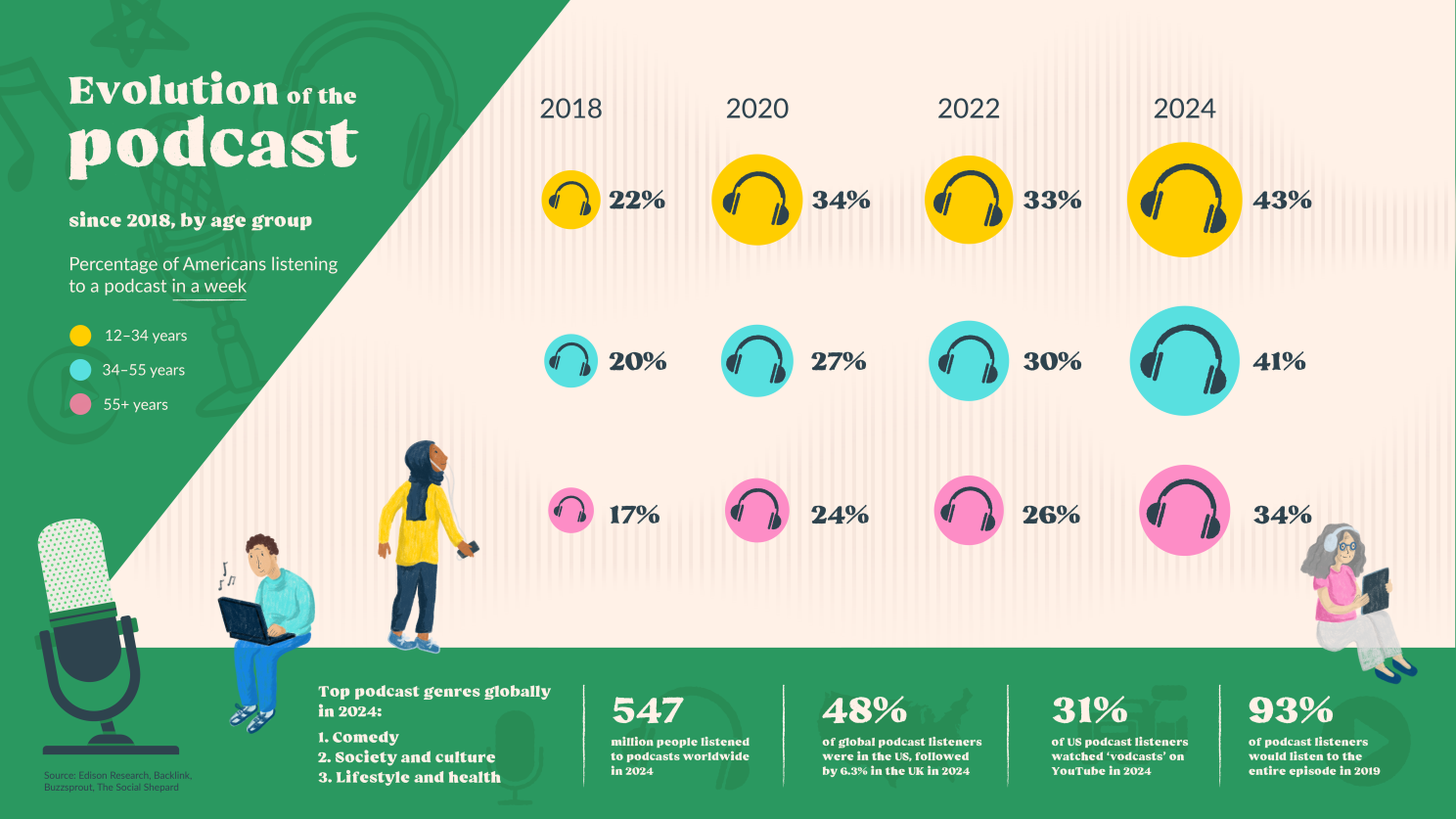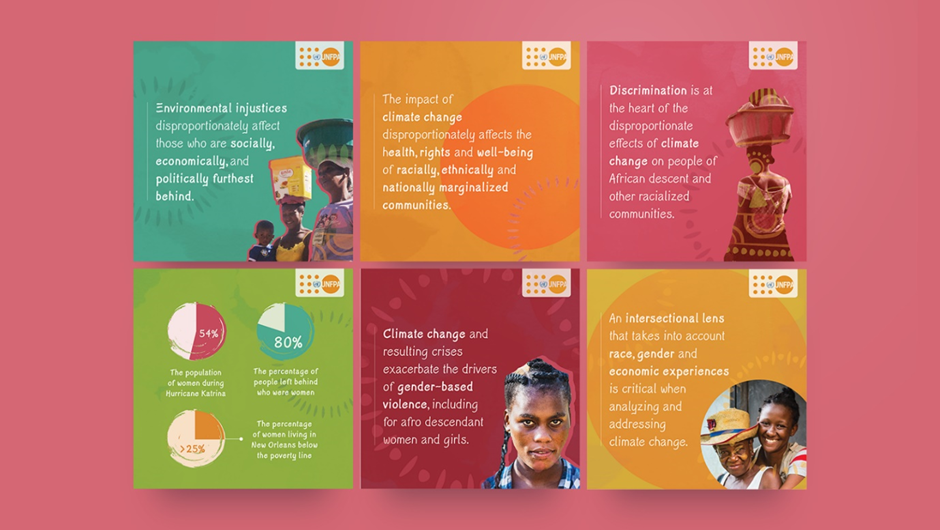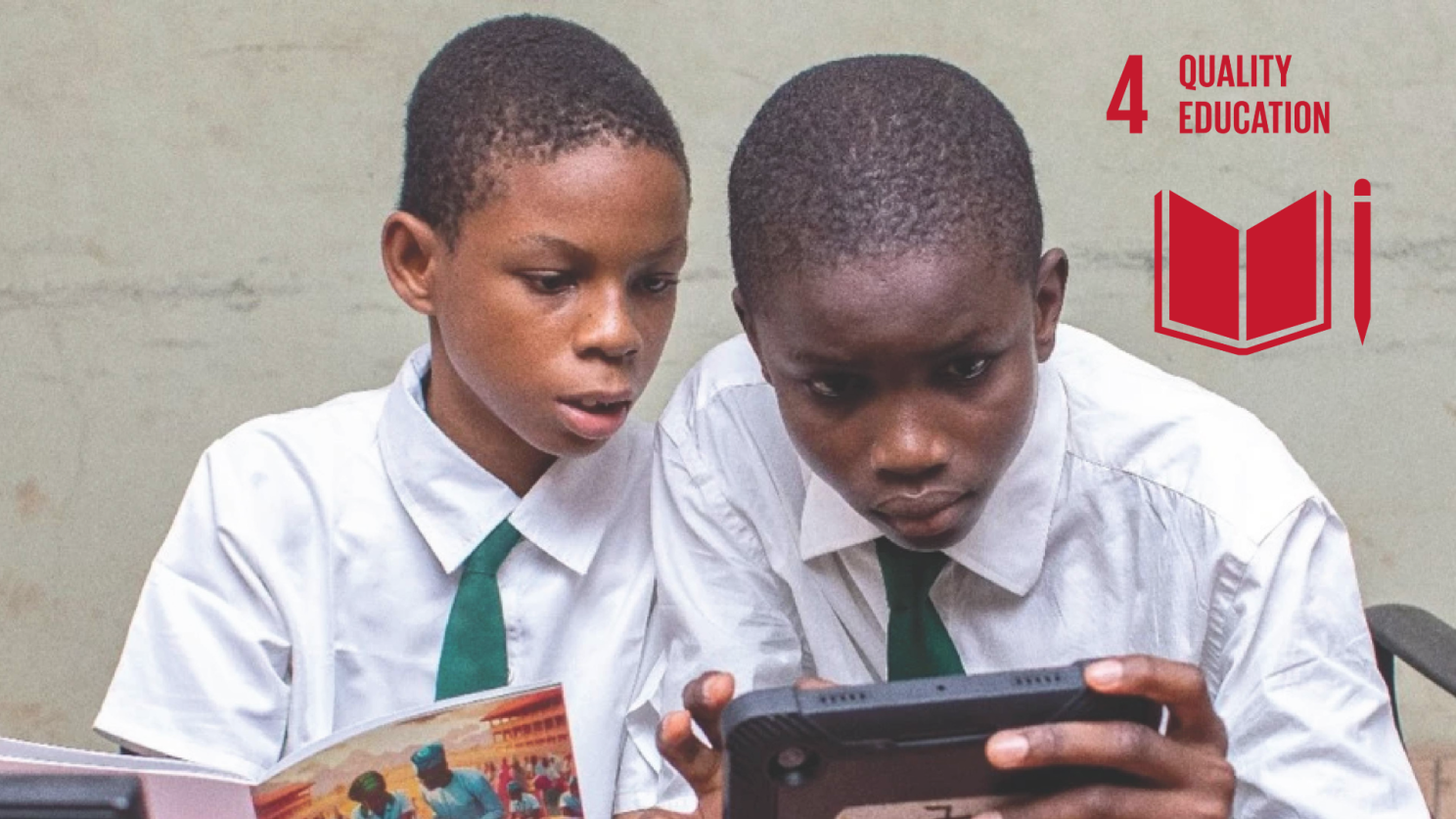
A special edition exploring the podcast medium
We’re back! Our podcast, Communicating Development, returns with a fresh take on how effective communication strategies drive positive change worldwide. Each episode, covering topics such as media relations, artificial intelligence (AI), storytelling and advocacy, offers insights into the most effective ways communications professionals can address global issues like poverty, healthcare, education and social justice.
In our kick-off episode, our industry experts discuss the dangers of treating communications as an afterthought in development, and why capturing a unique narrative is more crucial than ever in a media landscape that is increasingly saturated by AI-generated content.

© Strategic Agenda: Podcasting Infographic
This infographic visualises the growth in podcast listenership over the past few years. It also reveals the value of podcasts as a marketing tool:
Podcasts are particularly valuable to businesses:
A study by the BBC revealed that businesses investing in company podcasts experienced an 89% increase in engagement and brand awareness compared with those using other platforms such as blogs.
The length of podcasts allows businesses to establish thought leadership, sharing knowledge of their craft and industry insights, and building credibility in their field. This can open the door to partnerships and guest appearances down the line.
A company podcast is also a chance to offer a peek behind the curtain, revealing the personality and authenticity of your brand, fostering connections with listeners and leading to committed following.
We will delve further into the nuts and bolts of a successful company podcast in this newsletter.

© Mart Production: Content Plan
Launching a podcast is more than just recording and uploading the audio.
Your podcast creates a broader strategy and content ecosystem to engage as many users as possible in your website and brand.
Podcasts can be repurposed into trailers, clips and teasers suitable for different platforms and age groups. Vodcasts, in particular, lend themselves to content diversification.
An example content strategy (for Instagram/LinkedIn):

© Strategic Agenda: An example of a carousel or set of visual posts for UNFPA
Top tips:
Consistency is key: Create a content calendar to strategically plan your communications schedule. Stick with it – remember, you’ll likely grow tired of your content before your audience does.
Segmentation: Plan, script and produce your vodcast with segmentation in mind. Breaking down episodes into distinct sections makes it easier to repurpose them into stand-alone clips or teasers.
Promotion/backlink: Drive traffic back to your podcast by promoting it through backlinks in other content, such as websites, blog posts or newsletters.
AI has made it possible to transform written articles into podcast episodes with minimal effort.
While we don’t recommend entrusting the audio version of your corporate newsletter to AI, if budgets are tight and you want to go down the route of just creating ‘something’, AI is here to help. It won’t replace a well -structured and dynamic podcast, but it’ll do the job if you’re strapped for resources and want to tick the ‘we have a podcast’ box.
Here’s a step-by-step guide to help you convert your articles into AI-generated podcasts.
Choose an AI podcast generation tool:
Several AI tools can help you convert text to audio. Some popular options include:
We recommend Google’s NotebookLM, as it’s free and produces high-quality results.
Best practice:

© SmartEdge/World Bank, Students participate in an AI after-school program in Edo, Nigeria
This month, Sustainable Development Goal (SDG) 4, “Ensure inclusive and equitable quality education and promote lifelong learning opportunities for all”, is the subject of our series investigating the potential of artificial intelligence (AI) for achieving the SDGs.
Education is fundamental for children and adults across the world, and is imperative for employment and development. Despite this, we are facing an education crisis: 244 million primary school children are not attending school, there is a chronic lack of qualified teachers, and government investment in education policy is diminishing.
To overcome these failings, artificial intelligence (AI) is increasingly being touted as a potential solution, with teachers already using it to help speed up marking and lesson planning. AI is also being incorporated into vocational training and used to collate data on school connectivity.
While AI can help plug gaps in educational attainment, it won’t solve the very human problems of poor teacher remunerationand limited education investment. There is also the elephant in the room of inadequate electricity and connectivity.
These caveats aside, AI can have (and is already having) positive impacts in widening access to education. Moreover, it will clearly introduce a new paradigm for how education will be delivered. Given this backdrop, our article will explore how AI is being used to aid development.
This month, Sustainable Development Goal (SDG) 4, “Ensure inclusive and equitable quality education and promote lifelong learning opportunities for all”, is the subject of our series investigating the potential of artificial intelligence (AI) for achieving the SDGs.
Education is fundamental for children and adults across the world, and is imperative for employment and development. Despite this, we are facing an education crisis: 244 million primary school children are not attending school, there is a chronic lack of qualified teachers, and government investment in education policy is diminishing.
To overcome these failings, artificial intelligence (AI) is increasingly being touted as a potential solution, with teachers already using it to help speed up marking and lesson planning. AI is also being incorporated into vocational training and used to collate data on school connectivity.
While AI can help plug gaps in educational attainment, it won’t solve the very human problems of poor teacher remunerationand limited education investment. There is also the elephant in the room of inadequate electricity and connectivity.
These caveats aside, AI can have (and is already having) positive impacts in widening access to education. Moreover, it will clearly introduce a new paradigm for how education will be delivered. Given this backdrop, our article will explore how AI is being used to aid development.
Global Dispatches: Thoughtful commentary from policymakers, journalists and experts, specifically on the UN and UN-related issues.
VoxDev: Insights from researchers and policymakers about economic development, poverty alleviation and growth in the developing world.
Pod Save The World: An engaging breakdown of international news and foreign policy.
Global Development Institute podcast: The latest thinking, insights and debate in development studies, hosted by experts from the University of Manchester.
© Strategic Agenda: Communicating Development podcast
That wraps up this special podcasting edition of the Communicating Development newsletter!
Our goal is to equip you with insights and resources to inspire and streamline your development content.
Watch out for next month’s edition – we have more tips and trends to sink your teeth into!

Network Hub, 300 Kensal Road, London, W10 5BE, UK
We deliver comprehensive communications strategies that deliver on your organisation’s objectives. Sign up to our newsletter to see the highlights once a quarter.